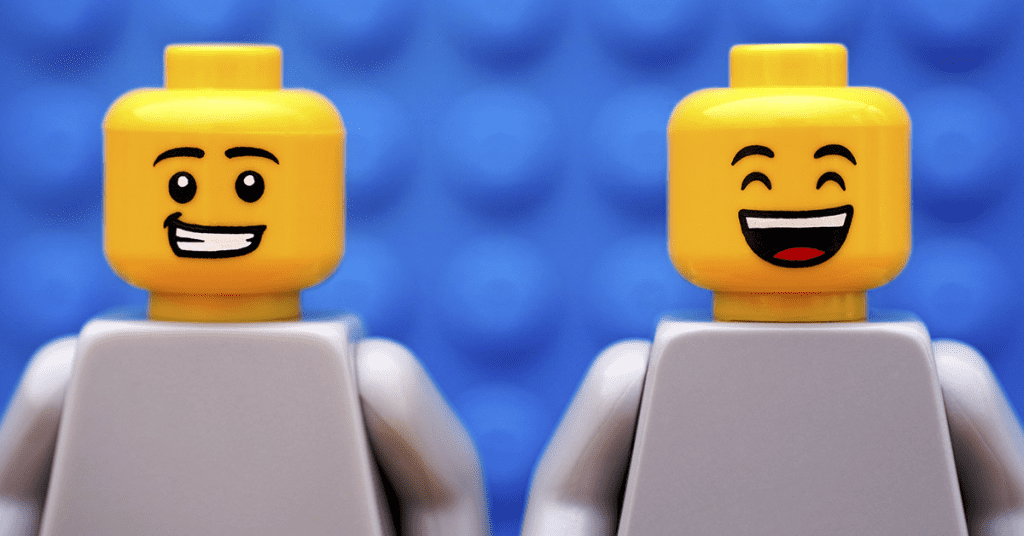Lego has been a beloved toy for generations, inspiring creativity and imagination in both children and adults worldwide. Yet, despite its global recognition, many people are only just discovering what the word “Lego” actually stands for. The clever and meaningful origin behind the name has recently sparked curiosity across social media platforms, with users expressing surprise at the revelation.

As news spreads about the meaning of “Lego,” many people have taken to social media to share their reactions. One user commented, “Cool little fact,” while another admitted, “I had no idea about that.” Even long-time fans and collectors are chiming in, with one remarking, “Cool, I didn’t know that being a new Lego collector.”
So, what does “Lego” really mean? The name is derived from two Danish words: “Leg Godt,” which translates to “Play Well.” The phrase perfectly encapsulates the company’s ethos, emphasizing the importance of play in children’s development. Interestingly, when founder Ole Kirk Kristiansen came up with the name, he was unaware that “Lego” also coincidentally means “I put together” in Latin—a fitting connection given the nature of the toy.
Lego’s journey to becoming one of the world’s most iconic toy companies began in 1932 in a small carpenter’s workshop in Billund, Denmark. At that time, Ole Kirk Kristiansen, a skilled carpenter, started crafting wooden toys to support his family during the Great Depression. His early creations were simple but well-made, and they laid the foundation for what would eventually become the Lego Group.
By 1949, Kristiansen and his team saw the potential of plastic toys and began experimenting with plastic bricks. Despite skepticism from his sons, Kristiansen believed in the future of plastic toys. “Have you no faith?” he asked them. “Can’t you see that if we do this right, we can sell these bricks all over the world?”
His vision soon became a reality. The first prototypes were called Automatic Binding Bricks, a precursor to the modern Lego bricks. In 1953, the name Lego Mursten (Lego Bricks) was officially adopted, marking the beginning of the Lego empire we know today.
From its humble origins, Lego has grown into a global powerhouse. Over the decades, it has evolved from a small, family-run business into one of the most recognized and loved toy brands in the world. In fact, Lego has been named the “Toy of the Century” by multiple organizations, a testament to its enduring appeal and innovation.
Lego’s success has been driven by its commitment to creativity, education, and quality. The company’s iconic interlocking bricks are more than just toys—they’re tools that foster imagination, problem-solving, and spatial reasoning in children. Even as technology has advanced, Lego has maintained its relevance by embracing innovation while staying true to its core principles.
In recent years, Lego has made significant strides toward sustainability. In 2018, the company introduced its first Lego elements made from sustainable materials like plant-based plastic. This move reflects Lego’s commitment to reducing its environmental impact and ensuring that future generations can continue to enjoy their products without compromising the planet.

Lego’s innovation isn’t limited to sustainability. The company has also been recognized for its inclusivity efforts, particularly with the launch of Lego Braille Bricks. Developed in collaboration with the Lego Foundation, these specially designed bricks are intended to help children with visual impairments learn braille while encouraging critical thinking, problem-solving, and collaboration through play. The initiative has been widely praised for making education more accessible and inclusive.
Lego’s name may seem simple, but it carries profound meaning. The Danish words “Leg Godt” not only describe the company’s mission—promoting high-quality play—but also embody the brand’s commitment to children’s development. The choice of name reflects Lego’s deep-rooted values and philosophy, which have undoubtedly contributed to its success over the decades.
Interestingly, Ole Kirk Kristiansen considered several alternative names for his burgeoning company, including “Legio,” which means “Legion” in Latin. While “Legion” might have worked, it doesn’t quite evoke the same sense of playfulness and creativity that “Lego” does. Kristiansen wisely stuck with “Leg Godt,” a decision that has helped shape the company’s identity and global appeal.
Since officially adopting the name Lego in January 1936, the company has continued to expand its reach and influence. Though the basic design of the interlocking blocks has undergone some changes over the years, the fundamental principle remains the same: Lego encourages imagination, creativity, and endless possibilities.

From the development of themed Lego sets, like the beloved Star Wars and Harry Potter collections, to video games and movies, Lego’s empire has extended far beyond its original wooden toys. Yet, despite its rapid growth, the company has always stayed true to its roots—providing high-quality, imaginative play experiences for children and adults alike.
So, what does Lego stand for? More than just a name, Lego symbolizes the power of creativity and play. The Danish phrase “Leg Godt” encapsulates the brand’s mission to inspire and nurture the builders of tomorrow. Whether you’re a child assembling your first Lego set or an adult revisiting a favorite childhood pastime, Lego continues to bring joy and learning to millions worldwide.
As people discover the deeper meaning behind the brand name, it serves as a reminder of the thoughtful craftsmanship and dedication that have defined Lego since its inception. And while the blocks may evolve, their ability to bring people together and foster creativity remains as strong as ever.
Did you already know what Lego stood for? Let us know your thoughts in the comments!


